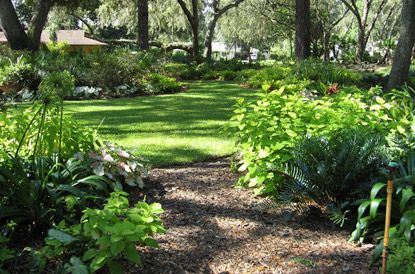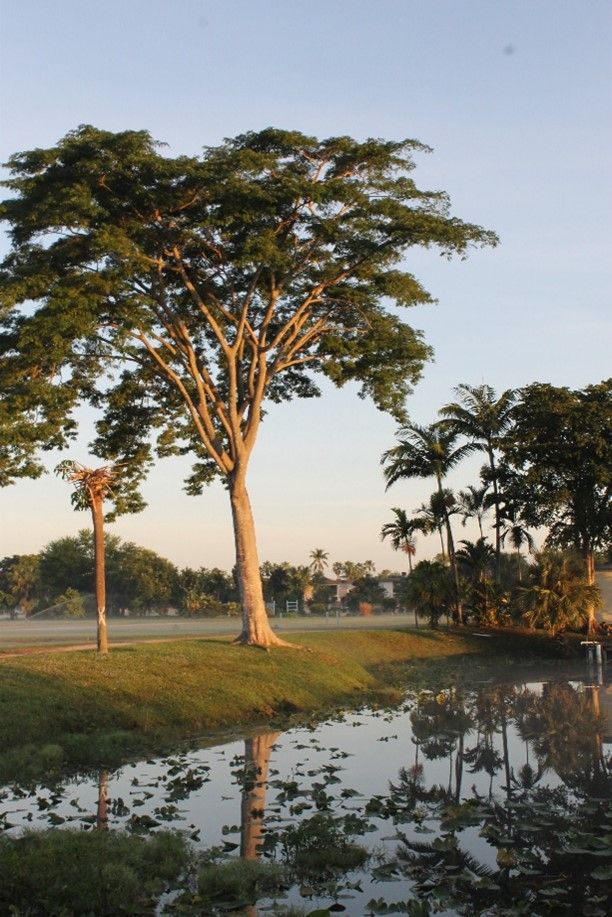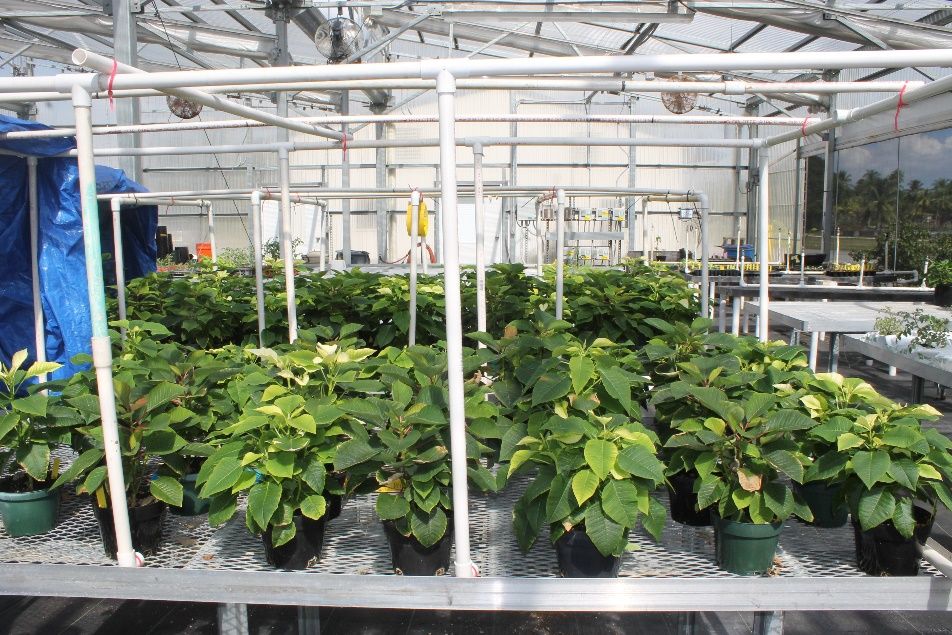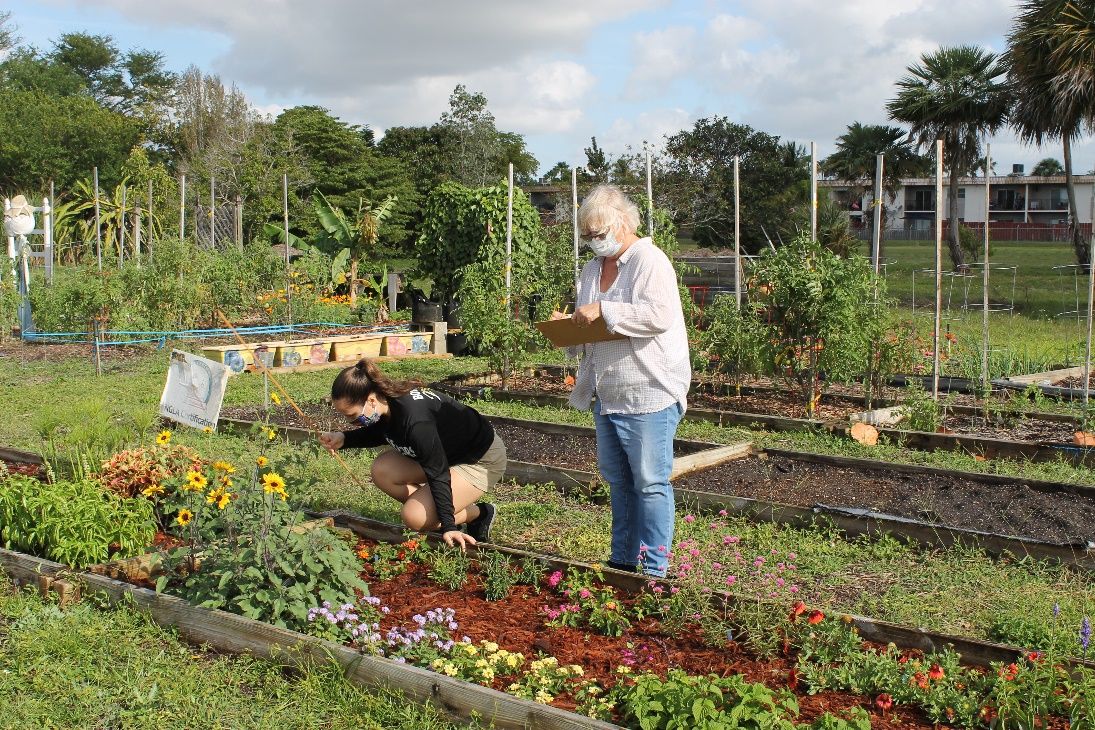
Credit: UF/IFAS ()
The audience for this publication is Florida master gardeners; greenhouse and nursery growers; anyone who works in soil, sod, and landscape design; workers of landscape maintenance services; high school graduates; and others who have an interest in careers or advancement opportunities in environmental horticulture. The certificate program was designed for working adults who want to advance their horticulture knowledge without getting a bachelor's degree. However, all the courses taken in the certificate program will count towards a degree if the student enrolls in the Plant Science degree program at the University of Florida.
The question, then, is if this program is for you. As one graduate of the program stated, “I cannot say enough about how this program has advanced my understanding of environmental horticulture science and the industry.”
Introduction

Credit: UF/IFAS ()
Florida is one of the top-producing states in the environmental horticulture industry (“green industry”), which includes garden centers as well as greenhouse, nursery, and landscape operations. Although, the industry is not without its challenges. A workforce that is knowledgeable of the issues facing the green industry and of proactive techniques that can help streamline operations and facilitate building efficiency can aid in alleviating some of the industry’s challenges. Graduates from the University of Florida Environmental Horticulture Management certificate program gain a background in sustainable ornamental horticulture practices used in the greenhouse, nursery, and/or landscape sectors of the green industry. The certificate program emphasizes techniques to proactively monitor plant health while implementing proper cultural and maintenance practices to minimize production and service interruptions using cost-effective approaches to conserve resources and improve profitability. Students and graduates that pursue additional certification through the Florida Nursery, Growers and Landscape Association (FNGLA) as a Florida Certified Horticulture Professional (FHCP) will be well equipped to deliver skilled services to wholesale and retail employers in the green industry and their clientele (https://www.fngla.org/professional-development/certifications/).
Issues and Trends Affecting the Environmental Horticulture Industry in Florida
Population growth is increasing water consumption. With more taps to turn on and more lawns to irrigate, population growth is contributing to the depletion of our precious water supply. Groundwater resources are projected to be insufficient to fully meet future demand in large areas of Florida. Without conservation efforts and the use of alternative water sources (e.g., reclaimed water), increased incidents of elevated salinity levels in estuaries from saltwater intrusion, dry wells, and weak spring flows are certain to occur (Florida Department of Environmental Protection 2023; NDMC n.d.).

Credit: Kimberly A. Moore, UF/IFAS
Demand is increasing for more products and services in an industry with persistent labor shortages. People desire to have pleasing landscapes. New Florida residents, homeowner associations in new housing developments, and businesses are requesting more services, especially those related to landscape and maintenance services where exceptionally high labor shortages are felt. Homeowners are also shifting preferences to purchasing Florida native and drought-tolerant plants, which places the onus on greenhouse and nursery producers to meet demand despite experiencing persistent labor shortages. Chronic entry-level, knowledgeable, and skilled labor shortages in the green industry are making it difficult to meet these demands.
Climate change is impacting the environmental horticulture industry. Florida is no stranger to hurricanes and tropical storms. However, the intensity of these storms has increased over the past several years, causing widespread destruction, power outages, and damaged facilities, equipment, and nursery crops, as well as flooding from unprecedented precipitation and storm surge. Drought is also problematic. Over the past decade, Florida has experienced periodic moderate-to-severe drought conditions lasting a few weeks to almost two years (3 – 97 weeks) in southwestern, west-central, southeastern, central, and north-central Florida (NDMC n.d.). Drought conditions impacted water supply and quality in these regions and necessitated drought-mitigating actions and warnings including 1) provisions to reduce elevated salinity levels in estuaries; 2) supplementing water supply with canal water; 3) mandatory restrictions on water use; 4) banning the use of residential and commercial irrigation sprinklers; 5) permitting agricultural irrigation with high pressure or high volume system use only between 9 p.m. and noon; and 6) warnings about water shortages, saltwater flowing from taps, wells running dry, and weak spring flows (NDMC n.d.). Prolonged drought and elevated salinity levels in the water supply are known plant stressors. Without corrective action, plants can succumb to these threats.
Prolonged exposure to high temperatures can lead to heat stress, disease, and overall decline in plant health. Ornamental plants grown in the greenhouse, nursery, and landscape are all susceptible to heat stress, which can cause excessive soil evaporation during periods of inconsistent irrigation and rainfall. Plants are unable to take up enough water and nutrients, resulting in wilted foliage, stunted plant growth, and potential plant death despite efforts to rehydrate heat- and water-stressed plants. Nutrient-deficient plants can also be more vulnerable to heat stress and become susceptible to devastating plant diseases, which could significantly damage and wipe out an entire crop. Healthy plants grown under optimal conditions are less vulnerable to insect infestations and disease.

Credit: Kimberly A. Moore, UF/IFAS
Pest and disease control is a challenge in Florida. Common pests, in addition to new and chemical-resistant strains of pests, can result in infestations that are difficult, if not impossible, to control. An effective integrated pest management (IPM) program that includes weed management, rigorous sanitation protocol, frequent scouting and inspection practices, effective nutrient management, irrigation management, the use of beneficial insects and chemical controls when warranted, and the presence of an active workforce trained in place can reduce the risk of costly crop damage and loss.
A Workforce Knowledgeable in Environmental Horticulture Management

Credit: Kimberly A. Moore, UF/IFAS
“Knowledge I gained in the certificate program can save time and money. It did for me and has become a big part of my work.”
The environmental horticulture industry is up against many challenges and needs to do more with less as well as be proactive to reduce the risk of costly problems before they arise. Challenges such as these often require new approaches and a knowledgeable and skilled workforce that can do the following:
- Facilitate the improvement of operational productivity by implementing proper cultural, sustainable, efficient, and cost-effective practices.
- Identify symptoms of plant stresses and decline, test water quality and irrigation methods, evaluate soil health and nutrient levels, and take corrective action where needed to promote plant health and establishment.
- Train and supervise staff to maintain and sanitize equipment, monitor plant health, and prevent pests and diseases.
- Accurately calculate production and equipment costs, as well as profit estimates, to identify where improvements and operational efficiencies may be needed.
University of Florida Environmental Horticulture Management Certificate Program
“Courses on plant establishment and nutrition were invaluable and taught me how to identify plant stressors that affect plant health and establishment. Knowing the signs and symptoms of stressors and the cultural practices that can be implemented to reduce the risk of damaging pests, disease, and nutrient deficiencies will help my bottom line and business reputation.”
Graduates in the certificate program earn 15 college credits from the University of Florida. The Environmental Horticulture Management certificate is offered via online learning technologies. The certificate enables entry- and mid-level working professionals who work in greenhouse and nursery operations, retail centers, sod, and landscaping to gain an academic foundation in sustainable ornamental horticulture practices used in the greenhouse, nursery, or landscape industries.
The certificate program has four core learning outcomes that students achieve through assessments and individual hands-on learning assignments. Throughout the program, students will demonstrate knowledge, skills, and abilities to do the following:
- Identify and evaluate sustainable elements in greenhouse and nursery production plans and/or landscape plans.
- Identify the impacts of light, temperature, humidity, and growing environment on plants and practice sustainable management practices in the greenhouse, nursery, and landscape.
- Identify approaches to reduce inputs such as water, fertilizer, and chemicals while maintaining high-quality ornamentals in the greenhouse, nursery, and landscape.
- Analyze and modify fertilization and irrigation practices in the greenhouse, nursery, and landscape to improve sustainability.
After students complete the 15 credits, they are asked to complete a 20-question quiz with 5 questions per learning outcome. Because the EHM certificate is subject to university accreditation, this quiz is used for our assessment only and allows us to track whether students are meeting the learning outcomes. Questions are selected randomly from a bank of 100 questions. With respect to hands-on skills, many of the courses have online laboratory components that provide hands-on experience. Furthermore, many of the students in the certificate program already work in the industry and have expertise in hands-on activities.
Information about the Environmental Horticulture Management certificate program and contact information can be found at https://catalog.ufl.edu/UGRD/colleges-schools/UGAGL/AGL_UCT02/ and https://hort.ifas.ufl.edu/environmental-horticulture-management-certificate/.
“The nursery and greenhouse classes taught me about irrigation, plant nutrition, pest and disease control, soil health, plant installation and care. I did not realize the value of this information until I applied it to my work.”
What do graduates have to say about the certificate program? Program graduates stated that they were attracted to the Environmental Horticulture Management certificate program because the University of Florida has an excellent agricultural program that publishes a wealth of valuable research. They also commented that the certificate program was available as a flexible online learning program that fit their work and family schedules, it was affordable for in-state students, and for some, tuition was fully covered by their employer. They reported that courses provided an academic grounding and understanding of the science behind effective and sustainable plant management and conservation practices. Courses addressed environmental challenges, pest and disease management, as well as economic factors to manage cost-effective operations. Several graduates stated that they learned a lot about plant health, identification, signs and symptoms of plant decline, and treatment and prevention strategies that they now use in their jobs.
Some graduates who had exposure to environmental horticulture through volunteer work prior to enrolling in the certificate program have since started their own businesses. Another graduate is changing careers and aspires to start a native plant business.
Students who have completed the program work in jobs in botanical gardens, residential landscape gardening and consultation, landscape design, native plant production, and state government environmental planning and restoration.
“Once I started classes in the certificate program, I realized how much it could help me in my current job and future career opportunities.”
The following is a sample of courses offered in the certificate program. Additional courses in other departments in the College of Agricultural and Life Science may be available as a substitute.
Table 1. A list of potential courses in the Environmental Horticulture Management certificate program, along with their description and number of credits.
For additional information and to register for the Environmental Horticulture Management certificate program, please contact Kimberly Moore, PhD, at klock@ufl.edu | 954-577-6328 in the College of Agricultural and Life Sciences.
References
Florida Department of Environmental Protection. n.d. “Division of Water Resource Management.” Accessed October 30, 2024. https://floridadep.gov/water
National Drought Mitigation Center (NDMC). n.d. “Education.” Accessed October 30, 2024. https://drought.unl.edu/Education.aspx